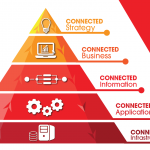Remote access and remote control is an interesting solution. How it works may basically have remained the same over the years, but the different use cases and what it increasingly enables is getting more and more exciting.
A majority of us, at one point or another may have tried TeamViewer’s solution, or at least a solution similar to it. We may also see it as just a useful piece of software that helps us troubleshoot computer problems, while we are at a location away from the computer.
But, its functionality and benefit has expanded over time.
And during the past two years when physical distancing was the norm, TeamViewer’s advantageous ability to access IT systems and computers from a remote location, was undeniable.
Sojung Lee joins the company as President for the Asia-Pacific region including China, Japan, India, Australia, and New Zealand (APAC), and during her conversation with Enterprise IT News, she shared about how TeamViewer’s popularity had prompted the organisation to restructure itself so that it could address potential segments more effectively and with more impact.
An APAC platform
According to Sojung, many businesses especially in this region do not see TeamViewer as an enterprise solution despite it having many enterprise use cases.
For the past 17 years, the company was really known for remote connectivity, and it was a solution that was easily downloadable from their website.
Sojung shared, “Here’s a little data point I checked. Out of 48 countries in Asia Pacific, we are serving 47 countries.”
TeamViewer recognised that with a regional headquarters, regional goals, aligned directions and regional reference use cases, business would really scale.
Her point is that everyone from anywhere has access to their web shop to download the TeamViewer software for free. The solution is able to support not only laptops but also mobile phones, and it is fairly simple for anyone to use to remotely access functions on these devices.
TeamViewer used to have their head office located in Adelaide, Australia. Marketing functions, along with engineering, customer support, operation, and more functions were also located there.
“And for ten years it was working like this because of the nature of our technology which was so easy to download and use… our business is mainly driven by the online web shop and inside sales,” Sojung explained, adding that digital campaigns also helped them create a lot of leads for sales.
But in 2018, the company realised there was a lot of opportunity on the ground as well, and by the end of 2018, the company entered China, Japan, Singapore, and India markets with offices in each country and each country leader reporting to the global CEO.
Sojung confessed that business from just the online sales and inside sales was already 20 to 30-percent per quarter without any proper partner programmes or even enterprise use cases.
Now, instead each country having their own separate business functions for example marketing, these could be combined at an APAC level and shared among the countries. At the APAC level, organising and planning can be aligned in a concrete manner with the global team.
TeamViewer recognised that with a regional headquarters, regional goals, aligned directions and regional reference use cases, business would really scale.
Now, instead each country having their own separate business functions for example marketing, these could be combined at an APAC level and shared among the countries. At the APAC level, organising and planning can be aligned in a concrete manner with the global team.
“And so I came onboard on December 1st, with the mission to set up the APAC platform for us to scale, for us to share, for us to really, really accelerate our growth in the region.”
TeamViewer’s use cases
Here’s a little unheard of story about TeamViewer helping a medical company in German, connect entire CT machines and MRI machines so radiologists did not need to go to specific clinics.
In this way, radiologists could diagnose remotely from CT and MRI images, instead of physically needing to be at the clinic.
Moving forward, Sojung wants to really establish TeamViewer’s image as not just a remote connectivity solutions provider for enterprises, but also as an Augmented Reality (AR) solutions provider.
One interesting use case she shared came from US car brand, Ford, which has over 500 dealerships across the globe.
In this way, radiologists could diagnose remotely from CT and MRI images, instead of physically needing to be at the clinic.
Previously, technical support teams would have had to go to each region to each dealership, to train them them on how to maintain different Ford card models and so on.
With the advent of 5G and potentially much faster data connectivity in the future, remote delivered training and instructions, and even predictive maintenance delivered remotely using AR technology with 3D smart glasses, is an appealing use case.
During the pandemic, this was not possible and they had turned to TeamViewer’s AR software combined with 3D smart glasses to deliver training to their dealerships all around the world.
With the advent of 5G and potentially much faster data connectivity in the future, remote delivered training and instructions, and even predictive maintenance delivered remotely using AR technology with 3D smart glasses, is an appealing use case.
“So this is the real story, and it’s actually the biggest story that I want to replicate in this region,” Sojung said.








